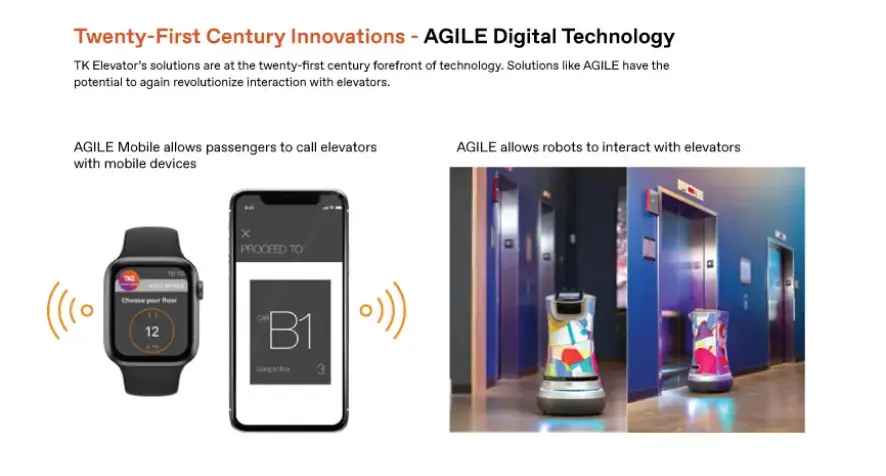Digital Technology and Automation: Innovations Past and Future
Because of the pandemic, we rely on technology more than ever. However, this newfound reliance only accelerated existing human-machine integration. Our June TK Elevator Index showed the steady recovery of in-person activity, especially in hospitality. Nevertheless, to remain competitive in the digitizing landscape these industries must embrace the power of technology to improve human interaction with their spaces.
An April 2021 article from the International Journal of Hospitality Management noted changing consumer expectations for post-pandemic travel, particularly for increased hygiene. Principles of human-machine synergy promise to improve operational efficiency in areas like hygiene. Contactless automation, artificial intelligence and mobile integration improve the customer experience at multiple touchpoints. These forthcoming innovations may be a new stage in the industrial revolution, a process dating back to the eighteenth century. The article’s authors call this deep human-machine interaction Industry 5.0.

The elevator industry has led innovation in human-machine interaction before. In a 2015 NPR interview, University of North Carolina architectural historian Lee Gray chronicled the challenges of elevator automation in the early twentieth century. Modern passenger elevators, first popular in luxury hotels, required manual operators in their early days. These operators often made mistakes, even dangerous ones like prematurely closing doors on passengers. To reassure customers, the industry pushed safety forward with safety bumpers and automatic stopping. By 1900, the industry created the now-familiar driverless elevator.
Despite its potential, the fully automatic elevator did not catch on immediately. Consumer expectations challenged the technology. According to Gray, on entering the elevator people “would quickly step back out and try to find someone to say ‘where's the operator?’” Building owners remained mostly uninterested until a major shakeup made the technology necessary.
In 1945, New York elevator operators went on strike, grinding vertical transportation to a halt in the world’s tallest city. The strike caused building owners to reconsider driverless technology and make passengers more comfortable with unfamiliar automation through seamless solutions like automatic announcements.

These events in history teach us the catalytic possibilities of external events. The elevator industry in 1945 faced operator strikes, but today we must adopt to consumer expectations following the pandemic and digitizing world.
TK Elevator and Twenty-First Century Innovations
TK Elevator’s solutions are at the twenty-first century forefront of technology. Solutions like AGILE have the potential to again revolutionize interaction with elevators. AGILE intelligently groups passengers based on capacity and destination, without the need to touch buttons in the elevator car. AGILE Mobile even allows passengers to call elevators with mobile devices.
AGILE even allows robots to interact with elevators. At Aloft Chicago, robots use AGILE-enabled elevators to deliver light room service or housekeeping requests. AGILE could enable sanitizing robots to clean around the clock with minimal human interference. This Industry 5.0 solution caters perfectly to recent consumer expectations around hygiene and social distancing, but also to the persistent expectation of timely and efficient service.

In addition to AGILE, MAX provides real-time elevator data to provide predictive and proactive service to customers. With MAX, our customers better understand movement in their buildings to minimize crowds, increase efficiency and experience less downtime. As we digitize more of our lives, businesses can use advanced technologies to satisfy their customers and gain a competitive edge in the future economy.
Click to see more information from TK Elevator on health and safety, AGILE and MAX.
 United States
United States

